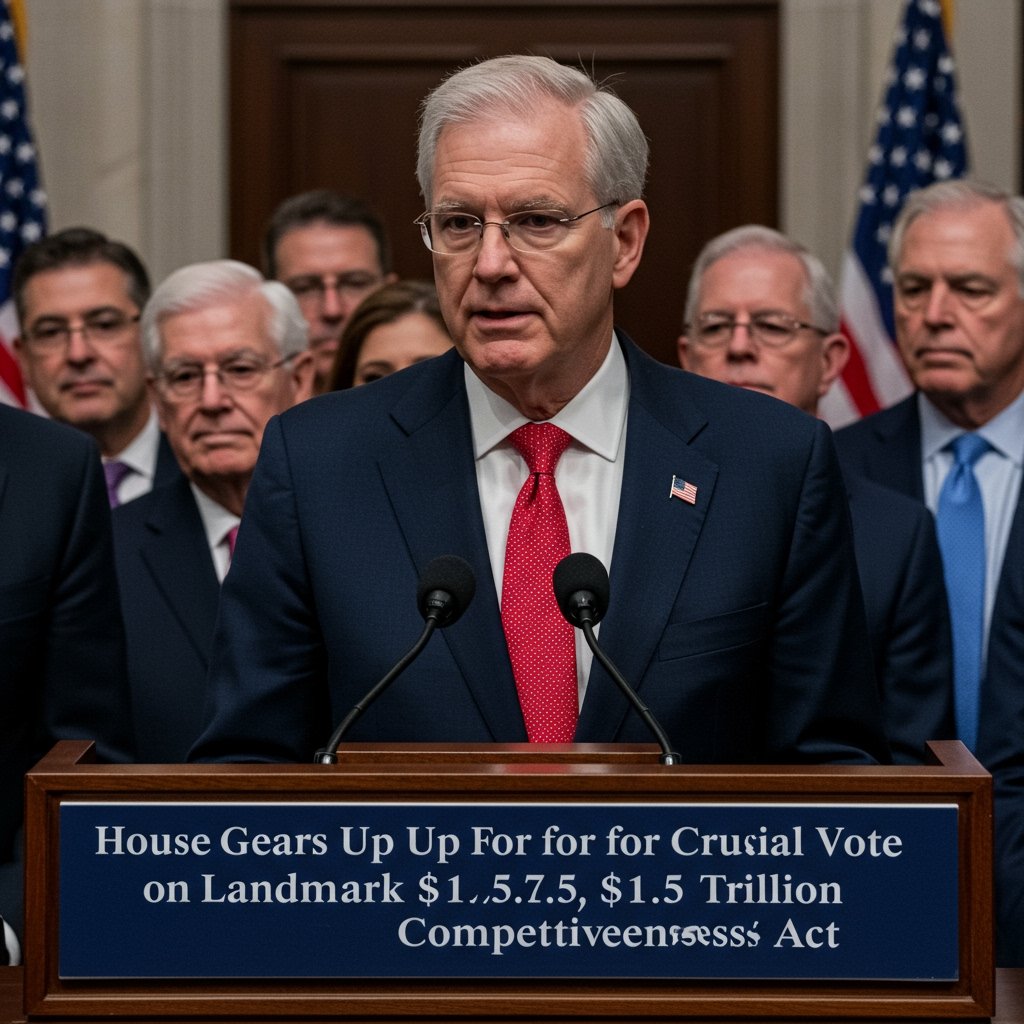Future of the National Competitiveness Act Hinges on House Procedural Vote
Washington D.C. — The fate of a sprawling, $1.5 trillion legislative package dubbed the National Competitiveness Act of 2025 hangs precariously in the balance as the U.S. House of Representatives approaches a pivotal procedural vote. Scheduled for March 15th, this vote is seen by many as the crucial hurdle the expansive bill must clear to advance through the lower chamber.
The National Competitiveness Act of 2025 represents a significant federal undertaking, proposing massive investments across key sectors of the American economy. Its primary objectives are clearly defined: to substantially boost domestic manufacturing capabilities, accelerate the transition to green energy sources, and significantly enhance funding for research and development (R&D). Proponents argue that these investments are not merely economic stimuli, but essential strategic moves required for the United States to maintain and strengthen its position in a rapidly evolving global economic landscape.
The bill’s advocates, including prominent figures like Speaker Anya Sharma, champion the legislation as indispensable for securing America’s economic future. Speaker Sharma has repeatedly emphasized that without bold, targeted investments in critical industries and foundational research, the nation risks falling behind international competitors in areas vital to long-term prosperity and national security. Supporters point to potential job creation, technological innovation, and increased economic resilience as the primary benefits expected from the bill’s passage.
However, the ambitious nature and sheer scale of the $1.5 trillion proposal have ignited considerable debate and opposition. Critics voice profound concerns over its potential impact on national finances and economic stability. A central point of contention emerged following the release of the Congressional Budget Office (CBO) score on March 5th. The CBO, the non-partisan arm of Congress responsible for scoring legislation, projected that the National Competitiveness Act of 2025, as currently written, would add an estimated $850 billion to the federal deficit over the next ten years.
This projection has armed opponents with potent arguments against the bill. They contend that such a substantial increase in the national debt, particularly during a period where concerns about inflation persist, could have detrimental effects on the U.S. economy. Opponents argue that the spending is excessive, potentially inflationary, and places an undue burden on future generations. They call for fiscal restraint and question the effectiveness and potential for waste within such a vast spending package.
The legislative journey for the National Competitiveness Act has seen movement in the other chamber of Congress. Senate committees completed their intensive markup process for the legislation on March 10th. This step involved thorough review, debate, and amendment of the bill within the relevant Senate committees, allowing senators to shape the language and provisions of the package before sending it to the full Senate chamber for consideration. While the Senate’s progress signals momentum, the House vote on March 15th remains a critical, and potentially decisive, juncture.
The procedural vote in the House on March 15th is not the final vote on the bill’s passage, but it is often a significant indicator of support and a necessary step to bring the legislation to the House floor for full debate and potential amendment. A failure to pass this procedural step could effectively halt the bill’s progress in the House, at least temporarily, forcing leadership to reassess strategy or even significantly alter the bill.
The political maneuvering surrounding the bill has intensified as the March 15th deadline approaches. Leadership in both parties is actively lobbying members, attempting to secure the votes needed for the procedural hurdle. The outcome is far from certain, reflecting the deep divisions within Congress regarding the appropriate level of federal spending and the government’s role in directing economic development.
Should the bill successfully clear the House procedural vote, it would then proceed to the full House floor for debate and amendment, a process that could be lengthy and contentious. If passed by the full House, the legislation would then need to be reconciled with the version passed by the Senate (assuming the Senate successfully passes its version after the committee markups). This reconciliation process typically occurs in a conference committee, where members from both chambers negotiate a final unified version of the bill before sending it back to both the House and Senate for final approval.
The National Competitiveness Act of 2025 represents one of the most ambitious legislative proposals of the current session. Its scope and cost reflect a strategic choice about the direction of the American economy and its global standing. The upcoming House vote on March 15th is more than just a procedural step; it is a direct test of whether the political will exists to advance this massive investment package despite significant concerns about its cost and potential economic impact.
As the deadline looms, policymakers, industry leaders, and the public await the outcome, recognizing that the decision made in the House could have profound implications for U.S. manufacturing, innovation, energy policy, and the national debt for years to come. The debate is robust, the stakes are high, and the future of the $1.5 trillion bill hangs squarely on the votes cast this week.






